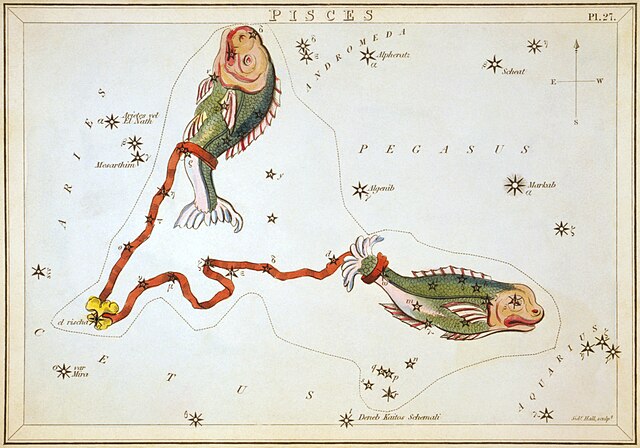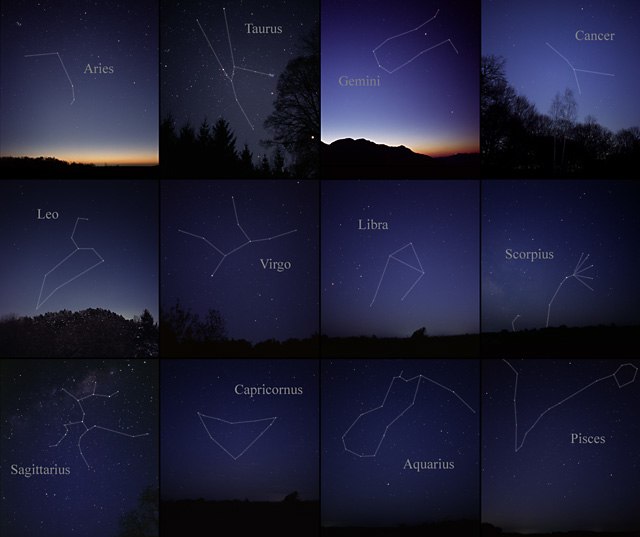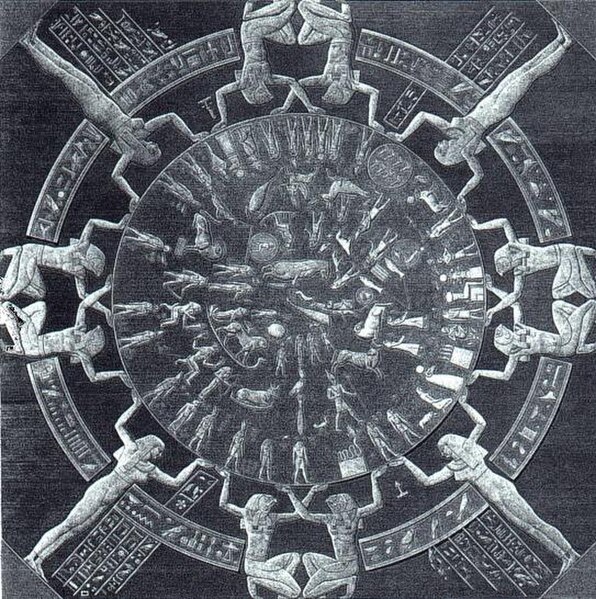Pisces is a constellation of the zodiac. Its vast bulk – and main asterism viewed in most European cultures per Greco-Roman antiquity as a distant pair of fishes connected by one cord each that join at an apex – are in the Northern celestial hemisphere. Its old astronomical symbol is (♓︎). Its name is Latin for "fishes". It is between Aquarius, of similar size, to the southwest and Aries, which is smaller, to the east. The ecliptic and the celestial equator intersect within this constellation and in Virgo. This means the sun passes directly overhead of the equator, on average, at approximately this point in the sky, at the March equinox.
The constellation Pisces as it can be seen by naked eye
From Urania's Mirror (1824)
The zodiac is a belt-shaped region of the sky that extends approximately 8° north and south of the ecliptic, the apparent path of the Sun across the celestial sphere over the course of the year. Also within this zodiac belt appear the Moon and the brightest planets, along their orbital planes. The zodiac is divided along the ecliptic into 12 equal parts ("signs"), each occupying 30° of celestial longitude. These signs roughly correspond to the astronomical constellations with the following modern names: Aries, Taurus, Gemini, Cancer, Leo, Virgo, Libra, Scorpio, Sagittarius, Capricorn, Aquarius, and Pisces.
The Earth's orbit around the Sun causes the apparent motion of the latter along the ecliptic (red). Earth is axially tilted 23.4° relative to this plane; its equator, extended to the stars, is shown in light blue.
Astrophotos of the twelve zodiac constellations
A sixth-century mosaic zodiac wheel in synagogue Beth Alpha incorporating Greek-Byzantine elements, Israel
The 1st century BC Dendera zodiac (19th-century engraving)






